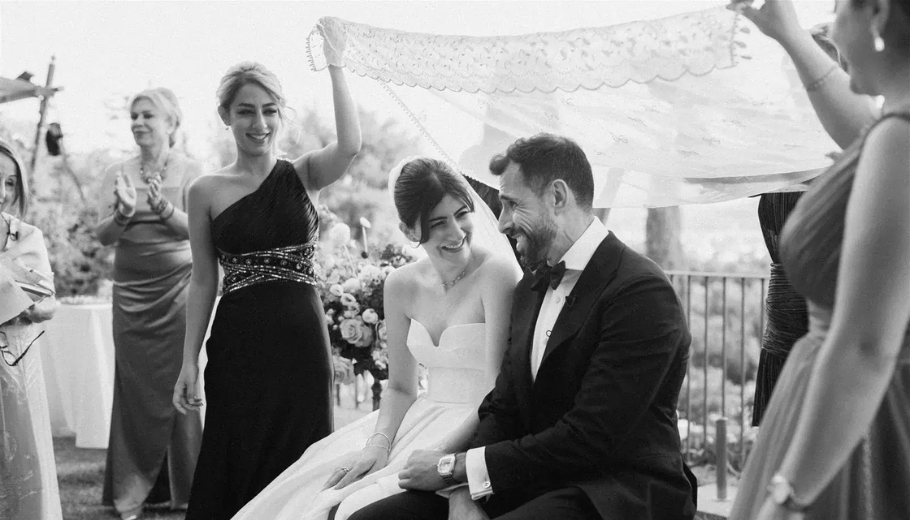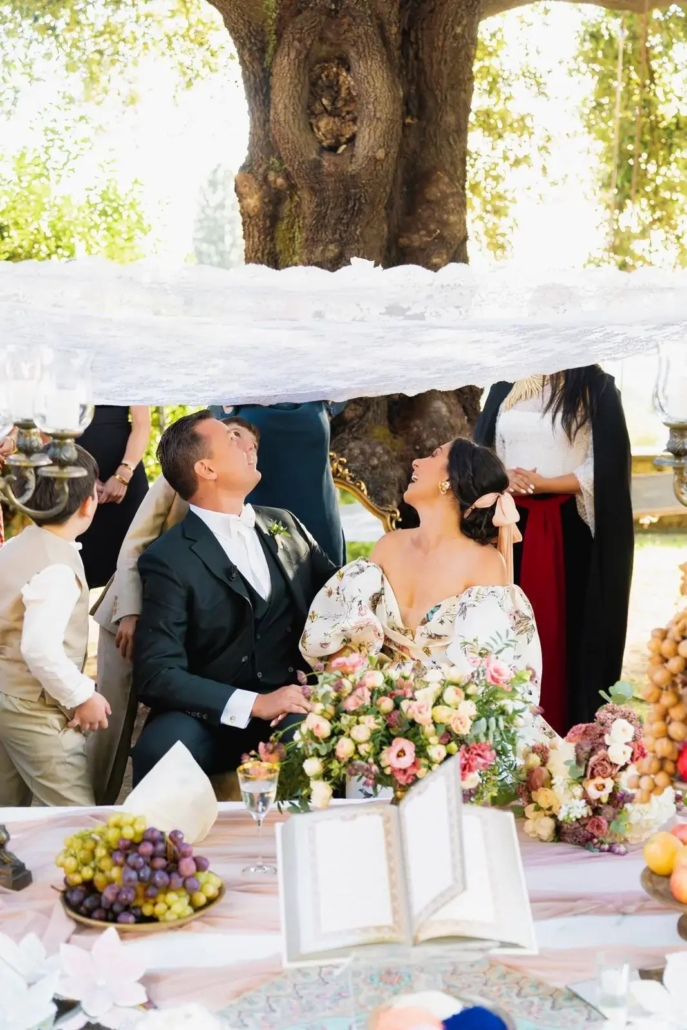Trendiest Engagement Rings of 2024
Engagement rings aren’t just sparkly accessories; they’re symbols of love and commitment, and as we step into 2024, the world of engagement rings is getting a serious upgrade.
In this article, we’re spilling the tea on the trendiest engagement ring styles, gemstone choices, metal options, and customization hacks for the year.
Whether you’re gearing up to pop the question or just want to stay on top of the latest engagement rings 2024 trends, keep scrolling to find the perfect bling for your special someone.
Why Picking the Right Ring is a Big Deal
Choosing the perfect engagement ring is like selecting the right emoji to express your feelings – it’s crucial. It’s not just about your partner’s style; it reflects your love story and the promise of forever.
So, think beyond the bling and consider your partner’s vibe, lifestyle, and the emotions you want the ring to convey. This isn’t just an accessory; it’s an heirloom that’ll carry your love story through the generations. Time to make it epic!
2024’s Engagement Ring Vibes
This year brings a wave of fresh engagement ring trends, but don’t worry, classics are still in the game, giving you that timeless elegance. Let’s dive into the hottest styles:
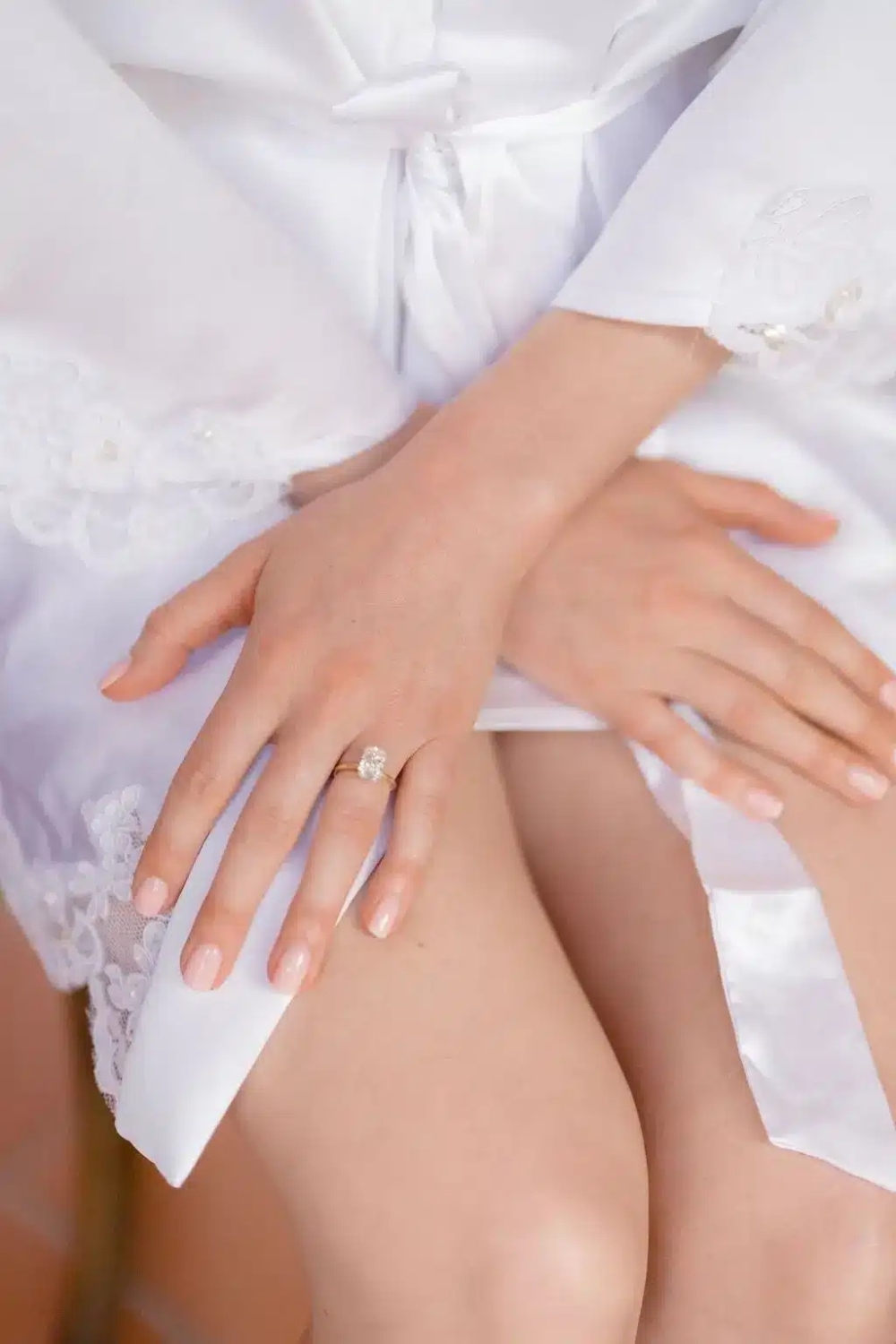
Timeless Solitaire Rings
Solitaire rings are like the go-to engagement rings. Simple, classy, and always in style – they’re the denim jeans of the jewelry world. Whether it’s a diamond or a pop of color, solitaire rings are the definition of sophistication, letting that center stone steal the show.
Elegant Three-Stone Rings
Three stones for past, present, and future – these rings are like a love story on your finger. With a bigger center stone flanked by two smaller ones, three-stone rings are not just stunning; they’re sentimental. Perfect for those who want their ring to tell a tale.
Vintage-Inspired Designs
Vintage vibes are still stealing hearts with intricate details and romantic feels. Think Art Deco, Victorian, or Edwardian influences with filigree work and unique gemstone cuts. Vintage-inspired rings bring that old-world charm to modern romances.
Also read 👉 Italian Wedding Traditions: Ceremony, Gifts, Food and more
Hot Gemstones to Spice Things Up
Diamonds have been the rockstars for ages, but 2024 is all about mixing it up with vibrant gemstones. Check out these gems making waves:
Sapphires
Move over diamonds; sapphires are taking the stage with their stunning blue hues. Symbolizing loyalty and trust, they offer a unique twist to traditional bling. From pink to yellow and green, sapphires let couples express their uniqueness while keeping it classy.
Morganite
Meet the peachy dream – morganite. This delicate gem, with its soft appearance, brings romance and elegance. Paired with rose gold, it creates a dreamy combo that stands out from the crowd.
Emeralds
Green with envy? That’s the effect emeralds have. Timeless and luxurious, these gems symbolize love and rebirth. Combined with diamonds or set in vintage-inspired designs, emerald rings scream regal and captivating.
GET IN TOUCH
Ready to plan your
Wedding in Italy?
Choosing the Right Metal for Your Engagement Ring
Picking the metal for your engagement ring is like choosing the perfect backdrop for a masterpiece. Let’s explore some fantastic options:
Platinum
Think of platinum as the VIP of metals. It’s durable, pure, and pretty rare. The bright white sheen it brings to the table enhances the sparkle of any gemstone. Plus, it’s hypoallergenic, making it a top choice for those with sensitive skin. Platinum engagement rings? They’re like the timeless beauty that can handle anything life throws at them.
Gold
Gold is one of the most popular choices for engagement rings, standing the test of time. Yellow gold gives off warmth and sophistication, while white gold offers a modern and versatile vibe.
And let’s not forget rose gold – it’s got this romantic blush thing going on, adding a touch of femininity that pairs well with pretty much any gemstone color.
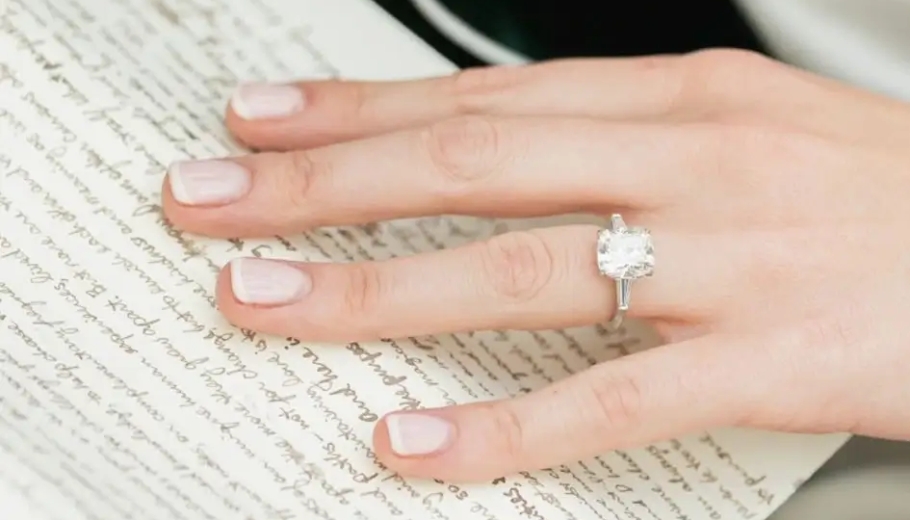
Palladium
Ever heard of Palladium? It’s like platinum’s cool cousin – lightweight, hypoallergenic, and boasting a beautiful white sheen. Palladium engagement rings are a beautiful alternative to platinum that doesn’t skimp on quality or style. Talk about a win-win!
Eco-Friendly Choices
Now, let’s talk about being eco-friendly and ethical because, in 2024, it’s not just about the bling – it’s about making choices that matter.
Rise of Lab-Grown Diamonds
Picture this – a shift towards sustainability in the engagement ring scene. Lab-grown diamonds are stealing the spotlight. They are created with fancy technology to offer conflict-free and eco-friendly alternatives to traditional mined diamonds.
Dive into the world of lab-grown diamonds not just for their ethical charm but also for their top-notch quality and brilliance. Your symbol of love just got a whole lot more conscious.
Eco-Friendly Materials and Sourcing
The spotlight is on eco-conscious materials and sourcing practices. Imagine rings crafted from recycled metals like reclaimed gold or platinum, reducing the impact of mining on our planet.
And hey, why not consider rings made from sustainable materials, showing off your commitment to keeping Mother Earth happy? It’s a dive into the realm of eco-friendly options where style meets environmental responsibility – making your engagement ring not just beautiful but also sustainable.
Related: The Art Of Choosing The Perfect Engagement Ring
Ethical Practices in the Jewelry Industry
Ethical considerations aren’t just about what your ring is made of; it’s about the whole journey from creation to purchase. People are all about supporting jewelry brands that play fair – fair labor conditions, responsible sourcing, and transparency in the supply chain.
Dive into the ethos of jewelry brands, find those that vibe with your values, and contribute to positive social and environmental impacts.
Your engagement ring is not just a symbol of love; it’s a commitment to ethical values in the jewelry industry. Now, that’s a rock-solid choice!
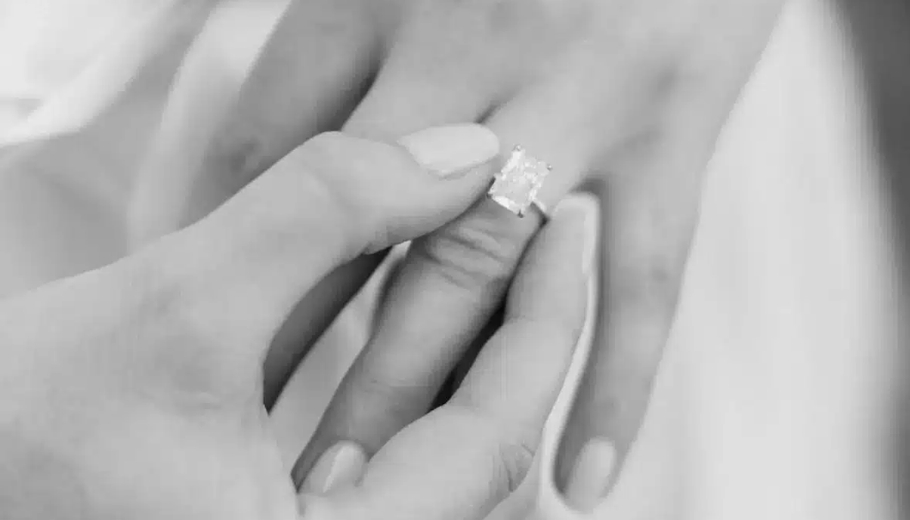
Crafting Your Unique Engagement Ring Experience
Embarking on the journey of selecting an engagement ring in 2024 is an exciting adventure, especially with the freedom to tailor it to your partner’s distinctive style and preferences.
Customization goes beyond picking a ring; it’s about creating a piece that narrates your love story like no other jewelry can.
You get to decide everything, from the shape and size of the center stone to the choice of metal, side stones, and intricate details. This way, you can ensure the ring perfectly suits your partner’s taste, making it a one-of-a-kind symbol of your love that will be cherished for a lifetime.
Giving Tradition a Modern Engagement Rings Twist
Mix it Up with Metal Bands
In this age of boundless creativity, mixed metal bands steal the spotlight, adding a contemporary twist to traditional engagement rings.
Imagine the captivating fusion of rose gold with platinum or yellow gold with white gold, creating a mesmerizing contrast. Dive into the world of warm and cool tones, creating a uniquely personalized touch that mirrors the diverse stories of modern love.
Say Goodbye to Conventional Shapes
Bid farewell to the ordinary round-cut diamonds as 2024 embraces geometric and asymmetrical shapes that redefine the aesthetics of engagement rings.
Picture hexagonal halos or unconventional pear and kite-shaped stones, each design telling a couple’s unique tale. Embrace the bold and avant-garde expression of love found in the world of asymmetry.
Add a Splash of Color with Gemstones
Step away from the conventional clear diamond trend – 2024 is all about the surge in popularity of engagement rings adorned with colored gemstones. Whether it’s sapphires, emeralds, or even morganite, these alternatives add vibrancy and meaning to the ring.
Couples are increasingly drawn to the symbolism and personal significance of colored gemstones, making them a meaningful choice for those looking to make a bold statement with their engagement ring.
Engagement Rings that Fit Your Budget
While engagement rings often come with a hefty price tag, there’s good news – you can find budget-friendly options that don’t compromise on quality or style. Here are some alternatives to consider:
Lab-Grown Diamonds
Enjoy the beauty and sparkle of natural diamonds without breaking the bank. Lab-grown diamonds share the same physical and chemical properties as mined diamonds but come at a more affordable price.
Choosing a lab-grown diamond allows you to get a larger stone or invest in other aspects of the ring without stretching your budget.
Shining Bright with Moissanite
Moissanite, a lab-grown gemstone, offers exceptional brilliance and fire, often surpassing a diamond’s. These new engagement ring styles provide a stunning visual impact at a fraction of the cost, making them an excellent choice for couples mindful of their budget.
Unique and Affordable with Alternative Metals
Opting for alternative metals like titanium or tungsten can significantly reduce the cost of an engagement ring without compromising on durability or style.
These metals offer a modern and unique look, separating them from traditional options. Additionally, alternative metals are known for their resistance to scratches and tarnish, ensuring that the ring stands the test of time.
Picking the Ideal Engagement Ring for Your Partner’s Vibe
When you’re on the hunt for that perfect engagement ring, getting a grip on your partner’s style is the name of the game. It’s all about checking out what they wear, their accessories, and what they generally fancy to make sure the ring you choose is a seamless fit with their overall look. Here’s a breakdown of some style categories to mull over:
Classic
If your partner is all about timeless and simple beauty, think about going for a solitaire ring or a three-stone design. Pick a metal like platinum or white gold for that classic and classy touch.
Romantic
For those with a soft spot for romance, vintage-inspired rings boasting intricate details and filigree work are a match made in heaven. Consider gemstones such as morganite or emerald to sprinkle in some ethereal charm.
Modern
If your partner vibes with contemporary engagement ring styles, throw in a unique gemstone or a sleek design with clean lines. Metals, like rose gold or alternative metals, can jazz up the ring with a modern twist.
Shopping Tips for 2024
Online vs. In-Store Shopping Considerations
In this tech-savvy age, deciding between online and in-store shopping can greatly influence your ring-buying journey. Explore the convenience of online options, but don’t underestimate the perks of trying rings on in person.
Find a balance that suits your preferences by researching online and visiting local stores to ensure you discover the perfect fit for both your partner and your budget.
How to Nail the Right Ring Size
Make sure you know the correct ring size to avoid the stress of resizing. Sneak a peek at your partner’s existing rings or subtly ask friends and family for hints. If all else fails, consider getting a slightly larger size that can be resized later without compromising the ring’s integrity.
Cracking the Code on Diamonds and Alternative Gemstones
Before diving into the world of contemporary engagement ring shopping, arm yourself with knowledge. Grasp the 4 Cs of diamonds – cut, color, clarity, and carat weight – to make a savvy decision.
Also, delve into alternative gemstones and their unique characteristics to find the perfect balance between beauty and budget.
Being well-informed will empower you to make a choice that aligns with both your partner’s style and your financial considerations.
As we plunge into the realm of engagement rings in 2024, there’s a whole buffet of trends, gemstones, metals, and customization options to explore.
Whether you’re eyeing the classic solitaire or leaning toward vintage-inspired designs, rest assured there’s a flawless engagement ring for every style and budget. Just keep your partner’s preferences in mind while making this significant decision.
Whether you choose a traditional, modern diamond ring design or opt for a splash of color with a vibrant gemstone, remember that the real star of the show is the love and commitment the ring represents.
Best of luck on this journey, and may you land on the perfect engagement ring that tells your unique love story, bringing joy and happiness for years to come.

